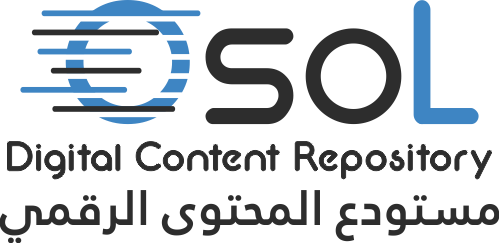Please use this identifier to cite or link to this item:
https://dspace.qou.edu/handle/194/2485| Title: | السمات المرتبطة باضطراب طيف التوحد للأطفال واستراتيجيات أخصائيي التأهيل في التعامل معهم في فلسطين Autism Symptoms and Rehabilitation Specialists' Strategies in Dealing with Them" |
| Authors: | أحمد محمد عواد, شرين Sheereen ahmad Awwad |
| Keywords: | اضطراب طيف التوحد الأطفال التأهيل |
| Issue Date: | 2018 |
| Publisher: | AL-Quds Open University |
| Abstract: | هدفت هذه الدراسة التعرف إلى "السمات المرتبطة بأعراض اضطراب طيف التوحد واستراتيجيات أخصائيي التأهيل في التعامل معهم، كما هدفت إلى التعرف على ضوء بعض متغيرات الدراسة مثل التخصص، وعدد الأطفال في المركز، وعدد الأخصائيين العاملين، واختصاص المركز، والجنس، والحالة الاجتماعية، وسنوات الخبرة.
ومن أجل تحقيق هدف الدراسة قامت الباحثة تبني إستبانة تتكون من (78) فقرة موزعة على خمسة مجالات هي السمات الإجتماعية، والسمات اللغوية، والسمات السلوكية، والسمات الانفعالية، والسمات الحسية، والسمات المعرفية. ومقياس استراتيجيات التدخل وله خمس مجالات هي: العلاج الفردي، واستراتيجيات البرامج الجاهزه والعلاج الجماعي، والعلاج الغذائي، والعلاج الدوائي والبدني تم توزيعها على عينة مقدارها (84) أخصائي تم اختيارهم من خلال العينه الميسره، وبعد تجميعها تم ترميزها وإدخالها إلى الحاسوب ومعالجتها إحصائيا باستخدام برنامج الرزم الإحصائية للعلوم الاجتماعية (spss) وتم قياس صدقها وثباتها.
أشارت نتائج الدراسة إلى ما يلي:
وجود متوسط حسابي عالي في الدرجة الكلية السمات المرتبطة بأعراض اضطراب طيف التوحد من وجهة نظر أخصائيي التأهيل العاملين في مراكز علاج التوحد .وجود درجة استجابة متوسطة في الدرجة الكلية الاستراتيجيات التي يستخدمها أخصائيي التأهيل في التعامل مع أطفال اضطراب طيف التوحد في مراكز علاج التوحد. عدم وجود فروق ذات دلالة إحصائية عند مستوى الدلالة (α ≤ 0.05) بين متوسطات استجابات أخصائي التأهيل حول السمات المرتبطة بأعراض اضطراب طيف التوحد تعزى لمتغيرات تخصص الأخصائي، وعدد الأطفال في المركز، وعدد الأخصائيين في المركز، واختصاص المركز، والجنس، والحالة الاجتماعية، ، وسنوات الخبرة. This study aims to identify the characteristics related to spectrum autism symptoms and rehabilitation specialists' strategies in dealing with them. Also, it aims to identify some study variables like (specialization, number of children, number of specialists, center specialization, sex, marital status, place of residence and experience). For achieving the study purpose, a questionnaire consists of (78) items included six domains of (social, lingual, behavioral, emotional, sensational and epistemic characteristics) and five domains of treatment strategies scale of (individual treatment, another strategies, group therapy, food therapy and physical and medication therapy) has been developed, distributed among 84 individuals who have been chosen randomly, gathered, codified, entered the computer and statically processed by using the Statistical Package of the Social Science (SPSS). Also, the study tool has been measured for reliability and credibility. The study results showed the following results: A high degree of response on the total degree of the characteristics related to spectrum autism symptoms and its domains. A moderate degree of response on the total degree of rehabilitation specialists' strategies in dealing with spectrum autism symptoms a.No significant differences at (α=0.05) level among the responses means about the characteristics related to spectrum autism symptoms and rehabilitation specialists' strategies in dealing with them attributed to the variables of specialization, number of children, number of specialists, center specialization, sex, marital status, place of residence and experience. In light of the study results, several recommendations have been suggested about the subject matter included the importance of conducting training programs for specialists working for treatment centers, providing treatment centers for treatment possibilities and the importance of carrying out statistics about the children with spectrum autism symptoms. |
| URI: | https://dspace.qou.edu/handle/194/2485 |
| Appears in Collections: | Psychological and Educational Counseling - الإرشاد النفسي والتربوي |
Files in This Item:
| File | Description | Size | Format | |
|---|---|---|---|---|
| sheren-awwad.pdf | 4.12 MB | Adobe PDF | View/Open |
Items in DSpace are protected by copyright, with all rights reserved, unless otherwise indicated.
